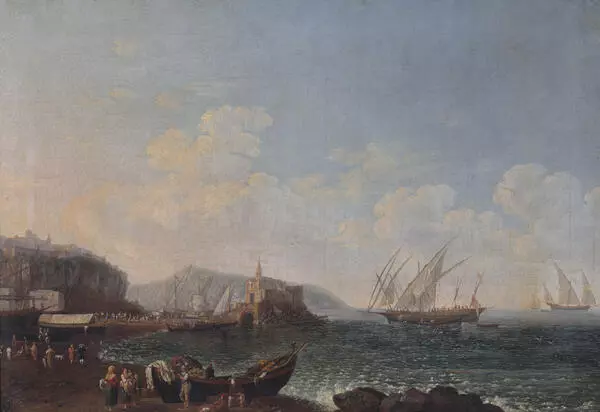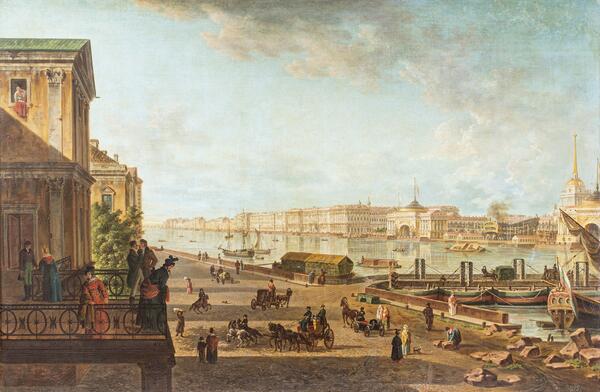Moscow. Lubyanka Square
This is a gargantuan city built by giants: tower upon tower, wall upon wall, one palace next to another! A strange mixture of ancient and modern architecture, poverty and wealth, European customs with Eastern traditions and practices! A wondrous, incomprehensible amalgamation of conceit and vanity and true glory and splendor, ignorance and enlightenment, humanism and barbarism.
The city from Pushkin’s childhood remained until the Napoleonic invasion and the famous fire of 1812. In the summer of 1811, Pushkin left Moscow to enter the Tsarskoe Selo Lyceum and returned only 15 years later. The newly rebuilt Moscow struck the poet. With a feeling of nostalgic sadness, he wrote to his colleague from the Ministry of Foreign Affairs, a fellow member of the Green Lamp association, Nikita Vsevolodovich Vsevolozhsky:
Diverse and animated,
Moscow captivates us all,
Old luxury and dinners,
Pretty girls and bells,
Sweet vanity of our days.
The painting by Fyodor Alekseyev shows a corner of Moscow before the fire. Fyodor Alekseyev was a Russian artist, one of the founders of the Russian school of landscape painting and a pioneer of the Russian urban landscape tradition. In 1766–1773, he studied at the Academy of Fine Arts. While at the Academy, after spending three years in Venice, he deliberately chose this as his main genre. In the late 18th — early 19th century, Fyodor Alekseyev’s popularity was so great that his contemporaries called him “the Russian Canaletto”. The views of Moscow and St. Petersburg painted by him in 1800–1810 were particularly famous. Thanks to the works of the artist and his students, it is possible to establish and forever preserve the architectural appearance of urban life in Russia at the turn of the 19th century.
In the picture one can see the Church of the
Grebnevskaya Mother of God, a stone three-story house with a high porch (a
building that belonged to Nikolay Novikov), the former Ryazan Metochion and the
Vladimir Gate Tower of Kitay-gorod.







